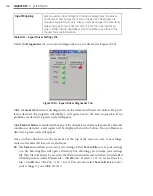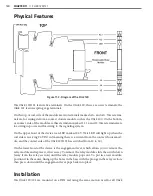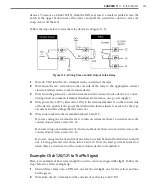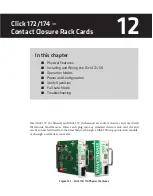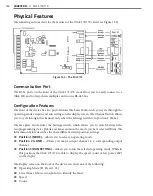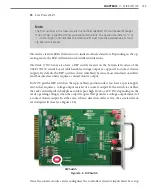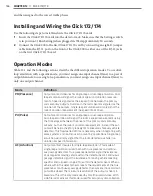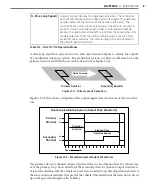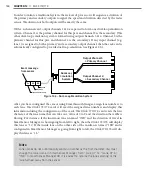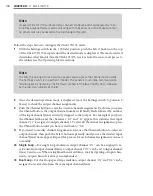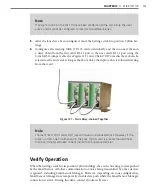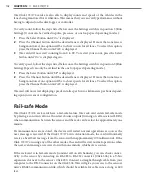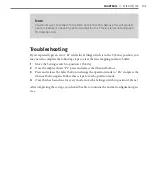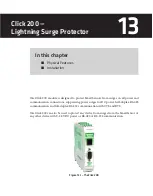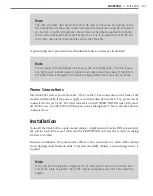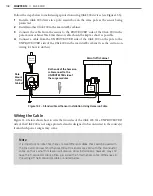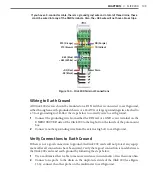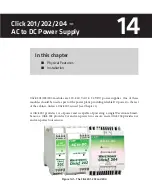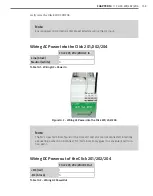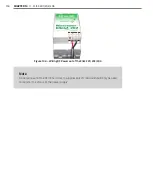
140
CHAPTER 12
•
CLICK 172/174
Note
If several Click 172/174 cards are daisy-chained, configure each card separately to en-
sure that only one device is communicating with the sensor at a time. Make sure that
no other cards are connected to the card being configured.
Follow the steps below to configure the Click 172/174 cards:
1
With the Settings switch in the 1 (Mode) position, push the Select button on the top
of the Click 172/174 faceplate until the desired mode is displayed. The mode selected
determines what kind of data the Click 172/174 receives from the sensor and passes to
the cabinet (see the Operating Modes section).
Note
To verify the pairing of a rack card to a sensor, you can press the Channel button while
the Settings switch is in position 1 (Mode). The sensor’s multi-drop communication
ID will appear in the display. The first two numbers of the ID will briefly flash, followed
by the last two numbers of the ID.
2
Once the desired operation mode is displayed, move the Settings switch to position 2
(Lane) to check the output channel assignments.
3
Push the Channel button to view the current channel assignments. Each time you press
the Channel button, the output channel number will briefly flash, followed by number
of the input channel (lane) currently assigned to that output. For example if you press
the Channel button and the characters “C1” and “1r” appear, this indicates that input
channel “1r” is assigned to output channel 1. To view all the channel assignments, press
the Channel button until you have cycled back to “C1.”
4
If you need to modify channel assignments, first use the Channel button to select an
output channel, then push the Select button repeatedly until you see the desired input
channel (lane) name appear. Repeat this process for each channel assignment you need
to modify.
˽
Single Loop –
For single loop emulation, output channel “C1” can be assigned to re-
ceive data from input channel (lane) 1; output channel “C2” can be set to input channel
(lane) 2 and so on. When using SmartSensor Advance, matched pairing of input chan-
nels to output channels is always recommended.
˽
Dual Loop –
For dual-loop speed trap emulation, output channel “C1” and “C2” can be
assigned to receive data from the same input channel (lane).
Summary of Contents for Click 100
Page 1: ...Click 100 400 Series USER GUIDE...
Page 11: ......
Page 17: ......
Page 27: ......
Page 41: ......
Page 43: ......
Page 79: ......
Page 129: ......
Page 145: ......
Page 161: ......
Page 175: ......
Page 183: ......
Page 187: ......
Page 207: ......
Page 219: ......
Page 225: ......
Page 245: ......
Page 259: ......
Page 260: ...www wavetronix com...

